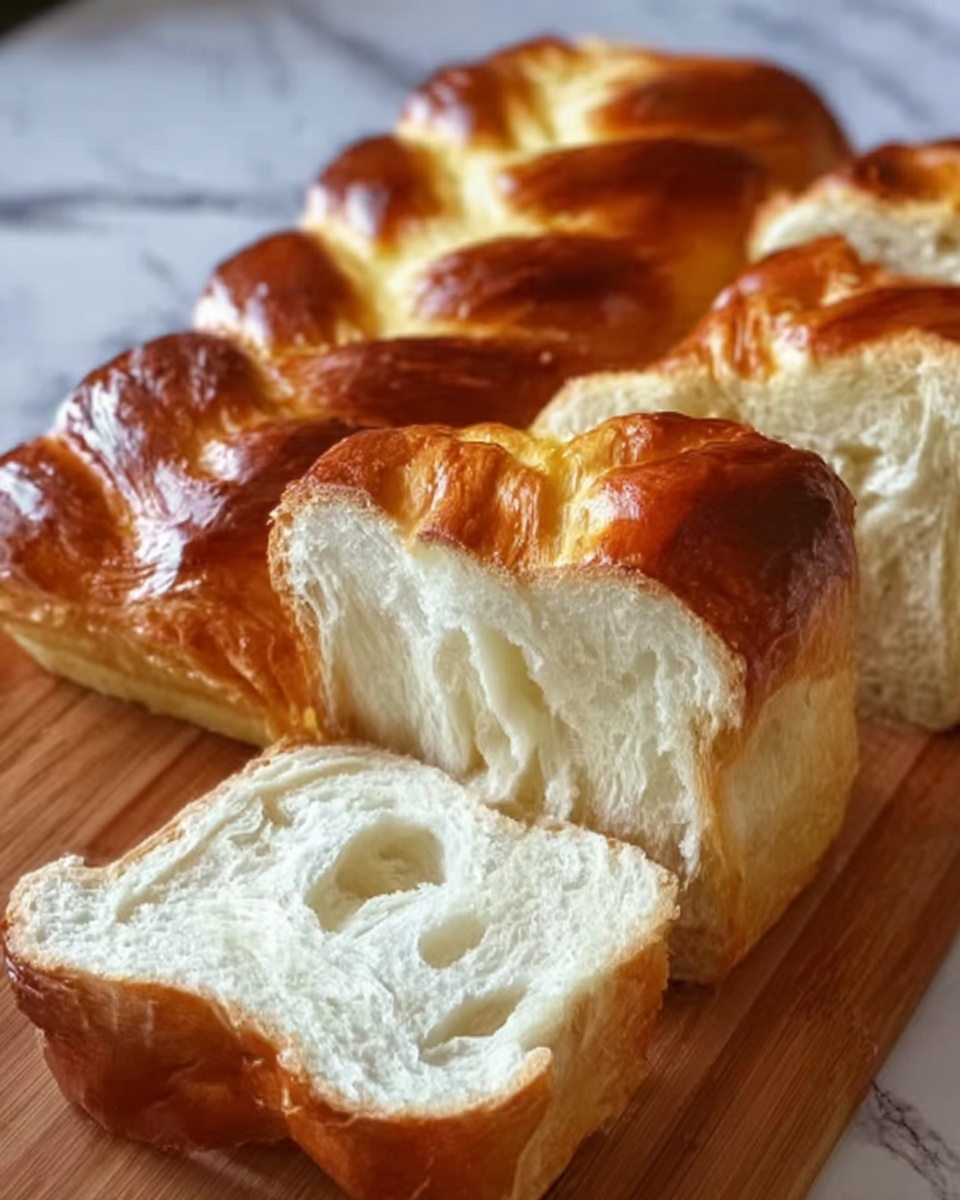If you have ever dreamed of biting into a warm, pillowy loaf with the perfect balance of crunch and softness, this Soft Fluffy French Bread Recipe is going to become your new favorite go-to. There is something so comforting about homemade bread that rises beautifully, smells amazing, and tastes utterly irresistible. This recipe walks you through every step, ensuring even beginners can make a loaf that boasts a golden crust and a melt-in-your-mouth interior. Get ready to fill your kitchen with the scent of fresh bread and enjoy a result that will have everyone asking for seconds.

Ingredients You’ll Need
These ingredients are simple staples you probably already have in your pantry, yet each plays a key role in crafting the perfect loaf. From the gentle yeast that helps your bread rise to the sugar that activates it, every item contributes to the taste, texture, and appearance of this Soft Fluffy French Bread Recipe.
- All-purpose flour (2.5–3 cups): The main structure builder that gives your bread its soft yet sturdy crumb.
- Warm water (1 cup): Activates the yeast and hydrates the flour for perfect dough elasticity.
- Olive oil or vegetable oil (1 tablespoon): Adds moisture and tenderness to every bite.
- White granulated sugar (1 tablespoon): Feeds the yeast and adds a hint of sweetness for a balanced flavor.
- Salt (1 teaspoon): Enhances the bread’s flavor and controls yeast activity to prevent over-rising.
- Active dry yeast (2 teaspoons): The magic ingredient that gets your dough puffed up and airy.
- Egg, beaten (1): Brushed on top to create a beautiful shiny golden crust.
How to Make Soft Fluffy French Bread Recipe
Step 1: Activate the Yeast
Begin by combining warm water with sugar in a small bowl. Sprinkle the active dry yeast on top and let it sit undisturbed for about 10 minutes. You’ll know it’s ready when the surface becomes frothy and bubbly, indicating the yeast is alive and kicking. This step is crucial for that perfect rise.
Step 2: Mix Dry Ingredients
While the yeast activates, mix the flour and salt together in a large mixing bowl. The salt is there not just for flavor but to also help regulate the yeast’s activity during baking, ensuring your bread’s crumb develops just right.
Step 3: Combine Wet and Dry Ingredients
Make a well in your flour mixture and pour in the frothy yeast mixture along with the olive oil. Stir lightly until the dough starts to come together. You’ll be forming what looks like the beginnings of a sticky, unified dough—a sign that gluten is about to work its magic.
Step 4: Knead the Dough
Turn your dough onto a lightly floured surface and knead vigorously for 8 to 10 minutes. Keep adding small amounts of flour only if the dough feels too sticky. You’re aiming for a smooth, elastic texture that springs back when gently poked. Kneading is where the gluten strengthens, giving you that wonderful chewiness.
Step 5: First Rise
Place your dough into a lightly oiled bowl and cover it with a damp cloth. Let it rest in a warm, draft-free spot for about an hour or until it doubles in size. This rising time allows the yeast to produce gas bubbles that create the bread’s soft and fluffy interior.
Step 6: Shape and Second Rise
Gently punch down the risen dough to release the trapped air, then shape it into a classic loaf form. Place your loaf on a baking sheet lined with parchment paper, cover loosely, and let it rise again for 30 minutes. This second rise develops the bread’s final form and texture.
Step 7: Preheat Oven and Prepare Egg Wash
Preheat your oven to 375°F (190°C). Brush the beaten egg over the top of your loaf with care—this will give it that irresistible glossy finish and help brown the crust beautifully for a delightful presentation.
Step 8: Bake
Bake your loaf for 20 to 25 minutes. You’ll know it’s done when it’s golden brown on top and sounds hollow when you tap the bottom. This stage locks in the flavors and sets the soft yet resilient crumb inside.
Step 9: Cool
Remove your freshly baked bread from the oven and let it cool on a wire rack before slicing. Cooling allows steam to escape, which keeps the bread from becoming gummy and lets slices hold their shape.
How to Serve Soft Fluffy French Bread Recipe

Garnishes
While the bread’s natural golden crust is lovely on its own, you can sprinkle some herbs like rosemary or garlic powder on the egg wash before baking for a burst of aroma and flavor. A light dusting of sea salt adds a gourmet touch that wakes up the taste buds wonderfully.
Side Dishes
Soft fluffy French bread pairs beautifully with a variety of dishes, from hearty stews and soups to rich cheeses and charcuterie boards. Its soft crumb is perfect for soaking up sauces or creating classic sandwiches that hold together without falling apart.
Creative Ways to Present
For an eye-catching display, slice the loaf and arrange the pieces in a basket lined with a colorful cloth. You can also hollow out the center and fill it with savory dips or spinach artichoke spread for an interactive bread bowl experience that’s fun for gatherings.
Make Ahead and Storage
Storing Leftovers
If you have bread leftover, wrap it tightly in plastic wrap or place it in an airtight container. Stored at room temperature, your bread will stay fresh and soft for up to two days, allowing you to enjoy those full flavors even the next day.
Freezing
To enjoy your Soft Fluffy French Bread Recipe even later, freeze the loaf or individual slices. Wrap them tightly in plastic wrap and then foil to prevent freezer burn. Bread freezes well for up to three months without losing its fresh-baked quality.
Reheating
When you want to revive your bread’s soft texture, pop slices into the toaster or warm the whole loaf in a 350°F oven for about 10 minutes. You’ll get back that just-baked warmth with a tender crumb and crispy crust, making every bite as delightful as the first.
FAQs
Can I use bread flour instead of all-purpose flour?
Absolutely! Bread flour has a higher protein content, which can give your French bread slightly more chewiness and structure. If you use bread flour, you might need to adjust the water slightly since it absorbs more.
Why is my bread dense and not fluffy?
Dense bread usually means the dough didn’t rise properly. Make sure your yeast is fresh and the water temperature is warm but not hot. Also, be patient with rising times and knead the dough thoroughly to develop gluten.
Can I make this dough in a bread machine?
You can use a bread machine for mixing and kneading, but it’s best to shape and do the final rise by hand to get that classic French bread shape and crust. Just follow the recipe’s ingredient order and use the dough setting on your machine.
Is it necessary to brush the bread with egg wash?
While optional, the egg wash gives your bread a stunning golden shine and a slightly crisp crust. If you prefer a more rustic look, you can skip this step without affecting the softness inside.
How long can I store this bread at room temperature?
Because this bread is soft and moist, it’s best enjoyed within two days when kept at room temperature in an airtight container. Beyond that, it might start to dry out or go stale.
Final Thoughts
This Soft Fluffy French Bread Recipe has all the magic of fresh-baked bread with none of the fuss, and it’s perfect whether you’re a baking novice or a pro. There’s nothing like pulling a warm, golden loaf from your oven and slicing into its soft, pillowy crumb. So why wait? Give this recipe a try and treat yourself to the comfort and joy of homemade French bread any day of the week.
Print
Soft Fluffy French Bread Recipe
- Prep Time: 20 minutes
- Cook Time: 25 minutes
- Total Time: 1 hour 45 minutes
- Yield: 1 loaf (serves approximately 8 slices)
- Category: Bread
- Method: Baking
- Cuisine: French
Description
This Soft Fluffy French Bread recipe creates a delightful homemade loaf with a tender crumb and golden, glossy crust. Perfectly combining simple ingredients like flour, yeast, and warm water, this bread involves a classic kneading and rising process, followed by baking to achieve a light and airy texture. Ideal for sandwiches, toast, or as a side to any meal, this recipe guides you through each step to ensure a deliciously soft and fluffy French bread every time.
Ingredients
Dry Ingredients
- 2.5–3 cups all-purpose flour
- 1 tablespoon white granulated sugar
- 1 teaspoon salt
- 2 teaspoons active dry yeast
Wet Ingredients
- 1 cup warm water
- 1 tablespoon olive oil or vegetable oil
- 1 egg, beaten (for brushing the top)
Instructions
- Activate the Yeast: In a small bowl, combine warm water and sugar. Sprinkle the active dry yeast over the top and let it sit for 10 minutes until it becomes frothy, indicating the yeast is active.
- Mix Dry Ingredients: In a large mixing bowl, stir together 2.5 cups of all-purpose flour and salt until evenly combined.
- Combine Wet and Dry Ingredients: Create a well in the center of the flour mixture and pour in the yeast mixture and olive oil. Stir until the dough begins to come together.
- Knead the Dough: Transfer the dough to a floured surface and knead it for 8 to 10 minutes, adding more flour if needed. The dough should become smooth and elastic.
- First Rise: Place the dough in a lightly oiled bowl, cover it with a damp cloth, and let it rise in a warm place for about 1 hour, or until it doubles in size.
- Shape and Second Rise: Punch down the risen dough to release air. Shape it into a loaf and place it on a parchment-lined baking sheet. Cover again and allow it to rise for another 30 minutes.
- Preheat Oven and Prepare Egg Wash: Preheat your oven to 375°F (190°C). Brush the top of the loaf gently with the beaten egg to achieve a glossy, golden crust.
- Bake: Bake the loaf for 20 to 25 minutes, until it turns golden brown and sounds hollow when tapped on the bottom.
- Cool: Remove the bread from the oven and transfer it to a wire rack to cool completely before slicing, ensuring the interior sets perfectly.
Notes
- For best results, use warm water (about 110°F/43°C) to activate the yeast without killing it.
- If the dough is too sticky during kneading, add flour gradually to prevent dryness.
- Ensure the loaf has risen adequately during both rises to achieve a light and fluffy texture.
- Brushing with egg wash gives the crust a beautiful shine but can be omitted for an egg-free version.
- Store leftover bread in an airtight container at room temperature for up to 2 days or freeze for longer storage.








